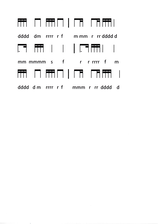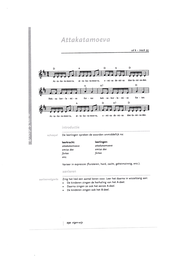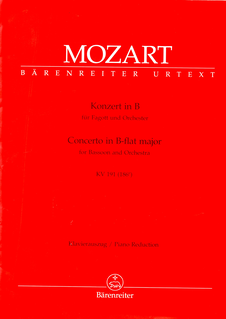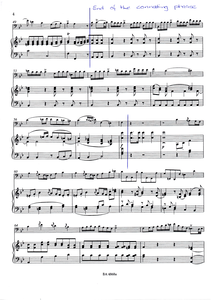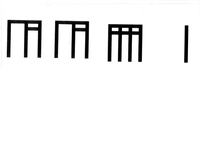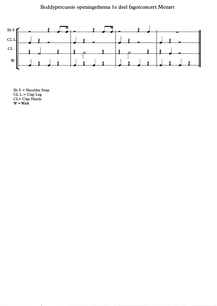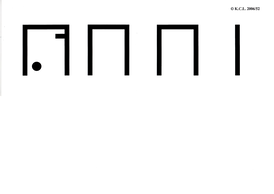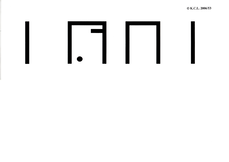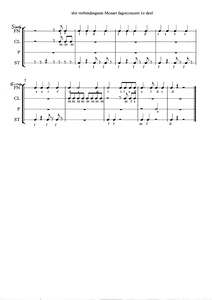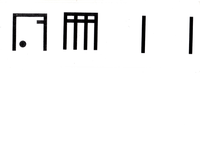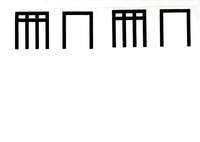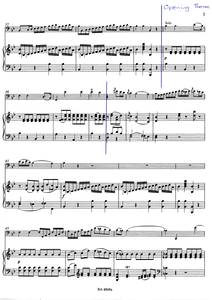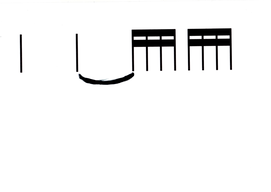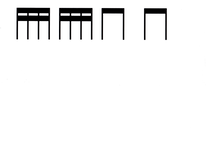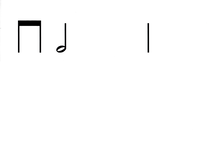How did the three chosen aspects become apparent in the workshop with the bassoon students from the Royal Conservatoire on 15 March 2016?
1 Singing
‘Singing is the core of music-making even when playing on an instrument’ Z. Kodály 1
Learn Attakattamoeva2, sung with text, using solmisation and rhythm language.
Bass line sung using solmisation read from hand signs.
Bass line accompaniment to opening theme of Mozart’s bassoon concerto, first movement, sung using solmisation.
Melody of opening theme sung using solmisation and rhythm language.
Bass line at end of connecting phrase sung using solmisation and rhythm language.
Main structure at end of connecting phrase sung using solmisation and rhythm language
2 PPP
Everything done with Attakattamoeva forms the Prepare stage for the first movement of Mozart’s bassoon concerto3. During this Prepare session, there are also moments of Presenting (saying and making visible the solmisation, rhythm language, stick notation) and Practice (playing the tune on the bassoon in various keys and with various tempi as a preparation for e.g. staccato playing in Mozart’s bassoon concerto).
Use body percussion for melody of opening theme, while walking and singing the bass line. This is the Prepare stage for playing the theme on the bassoon.
Improvise the opening theme in rhythm: this is the Practice session for the opening theme.
Opening theme is sung using solmisation to Present opening theme.
Then a Practice stage for the opening theme: play opening theme in two groups with melody/bass line, walking around the room as a group or in twos.
Body percussion of bass line at end of connecting phrase, and singing using solmisation and rhythm language is the Prepare stage for playing on an instrument.
3 Polyphonic skills
In two groups: play Attakattamoeva, melody and bass line. Walk around the room and make a bow to anyone playing the same part. This is playing, listening and walking simultaneously.
Playing from flash cards and at the same time understanding what the other group is playing. This is listening and playing simultaneously.
Body percussion of melody in the opening theme, while walking and singing the bass line.
In two groups, play the opening theme and the bass line on the bassoon, while walking around the room and bowing to anyone who is playing the same part.
Body percussion of bass line at end of connecting phrase while at the same time singing main structure at end of connecting phrase. In two groups, one half playing the melody, the other half the bass line.
Extracts from student reflections show that a great deal is new for them:
The coordination of walking, clapping and singing were new. Very difficult!
Another student said:
In fact, everything we did was new for me. For example, I have always used the absolute names of notes and never learned solmisation. Neither have I worked with the language of rhythm and I’ve certainly never played Mozart’s concerto.
And a third student said:
Almost all of the workshop was fairly new for me. I think when I was much younger, I learned about the hand gestures for solfège as well as the rhythm language, but it was so long ago (and before I started playing music seriously) that I didn't really remember any of it. Everything else was really completely new for me, though.
What was the most important thing you discovered in this workshop?
One student said:
I think the more carefree way of learning by playing is very helpful, it makes it fun to learn.
Another student said:
My most important experience in this workshop was the fact that it was fun and free, while still being educational.
And another student said:
For me the most important experience was when we started to combine singing and a rhythm. I discovered that it is harder then you would expect. When you practise this more it can really help you to see a number of things clearly and simultaneously.
In which way did you have the feeling there was opportunity for taking risks?
Plenty, it was a very comfortable environment
One person said:
Because the exercises mostly involved non-serious music (or at least disguising something more serious), it gave us the freedom to be more free and put ourselves out there more. Also, since everyone was pretty much in the same boat, it didn't feel like any one of us was embarrassing ourselves.
Reflections on the question Which aspects do you believe contributed to the development of creativity? produced the following reactions:
The new way of approaching learning by playing.
Others said:
Thinking about different ways to think about music
All the exercises that required us to listen to everyone else while simultaneously concentrating on our own task helped to develop creativity. When you are forced to listen to the rest of the group, your brain begins thinking in a more creative way and focusing a bit less on the specific technicalities of the individual task.
Which elements from the workshop help you to have a better understanding of the first movement of the Mozart concerto?
Because everything in the workshop helped to develop our creativity and willingness to take risks, while also subtly introducing elements of the Mozart bassoon concerto. It allowed the creativity and risk-taking to have a connection to the Mozart which in turn will help me with these aspects in my own development with the piece.
Although I’ve never played the Mozart before it became obvious that a large part of the workshop involved this piece and how to approach it. We tried approaching the piece in various ways, for example by using rhythm language, playing the bass line, playing in twos, etc.
What do you want to develop further?
During the workshop I noticed that I could be much more aware of what I’m actually doing while playing. I’ve already looked for information on rhythm language and I would like to find out more about solmisation. What’s more I’ve noticed that I don’t always feel the heartbeat of a piece. So I’m going to work on that too.
Another student said:
Knowledge of the harmony and other lines in the piece (not just melody)
Memory
To be able to listen to the others.
A third student said:
I would like to see how these exercises could be taken to the next level and directly applied to more in-depth work on the Mozart concerto.
Extracts from the reflections of the observer (major subject teacher):
What did you think of this workshop/lesson?
Refreshing!
What did you notice in particular?
For me it was mainly a reminder and confirmation of the idea that these learning techniques provide a good basis for playing all sorts of music.
The techniques are also particularly relevant to current thinking because over the last few decades many of these skills were not thought to be essential for performing classical music, but nowadays they are becoming increasingly essential because, for example, the whole classical music world is extending into other style areas and so skills such as improvisation are required more often.
This type of versatility demands a renewed look at these skills which, at the same time, allow a broader interpretation of more traditional classical music by concentrating less on reading “from note to note” and more on working on the basis of the underlying structure.
How were various skills expressed: commitment, giving each other opportunities, and listening to each other?
In a light-hearted manner, with challenges. It’s necessary to be practical, at the same time listening to what the others pick up directly.
How would you describe concentration and focus during the lesson?
Good, my experience of this group in particular is that it is often a question of balancing between good concentration and having fun, which went well.
Which elements contributed to understanding/experiencing the first movement of Mozart’s concerto?
I suspect that “experiencing” was the keyword in this lesson; really experiencing rhythms physically, singing the music while being aware of the intervals. In that way the music is saved effectively on your hard disk, thus forming a basis for further, more analytical, understanding. I would be interested to discuss, in a follow-up session, how this leads to, for example, the approach to phrasing in general, the broader lines in music, because this way of doing things really gives you something solid to hold on to. Students often get caught up in so many interpretations by all their favourite bassoonists or their various teachers. The result is that they lose track of how they can interpret the music themselves. In that case, this method is one of the few ways which can lead them back to their own characteristic interpretation.
Conclusions from workshop for Conservatoire bassoon students
1 The observations reveal an evident pleasure in learning. Students mention in their reflections that it was a really comfortable learning environment; carefree, with a chance to have fun.
2 The students indicate that the manner of working gave them more insight into their own learning process, and that there were elements they would very much like to develop further. This method allows them to take charge of their own learning process.
3 The films show that both concentration and commitment to each other were good. The teacher (for students with bassoon as Major) mentioned that the students were challenged in a playful way, yet the concentration remained good. According to him this group in particular needs to find the balance between the two and this really succeeded in the workshop.
4 Much was new for the students, such as applying fun elements to the learning process. They agreed that this stimulated them to be more creative. In particular, the polyphonic activities helped this group of students to think about music in alternative ways.
5 The teacher indicated that this method of working is a unique way of getting the students to interpret the repertoire in their own characteristic way. It would be very interesting in future to see how all this can be further developed.
6 It is also interesting to notice that I could have left out the first hour of this workshop for the students who had already worked on all facets of folk songs, singing, solmisation and the rhythm language as a result of the methodology offered in the Beginners’ courses. In that case, we could have started immediately with all the activities that involve the opening theme of Mozart’s bassoon concerto and from that point could have worked in greater depth on more of the elements from the first movement.
1 Kodály Zoltán(2002). Music should belong to everyone: 120 quotations from his writings and speeches. Budapest: Gemini Nyomda
2 Frans Haverkort, Rinze van der Lei, Lieuwe Noordam(2007). Eigenwijs: liedbundel voor het basisonderwijs. Utrecht: Hoonte Bosch & Keuning
3 Mozart W.A.(2003). Concerto in B-flat major for Bassoon and Orchestra, Piano Reduction. Kassel: Bärenreiter-Verlag
